“Carlos Santana said, ‘I’ll play bass – you play guitar.’ I said I couldn’t, but he told me whatever I played belonged to me. I could own it”: Super-producer Raphael Saadiq on how he switched to guitar and earned his signature Fender Telecaster
The Grammy-winning producer has worked with the biggest names in music. He explains why the Telecaster has appeared on every album he’s ever worked on – and shares what he learned from Stevie Wonder, Beyoncé, Barry Gibb and countless others
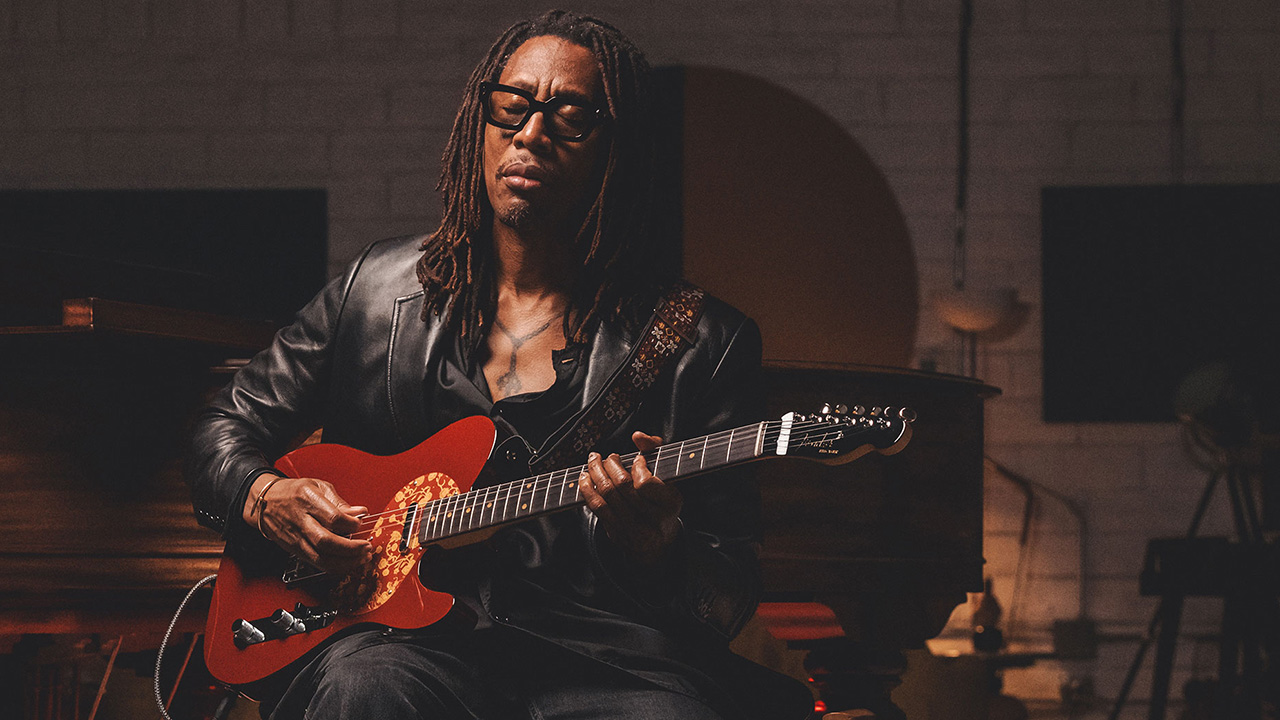
Raphael Saadiq is one of the biggest and best hip-hop and soul producers on the planet. The American singer-songwriter, multi-instrumentalist and studio wizard first rose to prominence in R&B group Tony! Toni! Toné! before going on to work closely with artists as globally revered as Beyoncé, Stevie Wonder and Mary J. Blige, as well as releasing five albums of his own and overseeing the music for a number of films and television shows.
The multiple Grammy winner’s name can be found on many hit recordings, from D’Angelo and Whitney Houston to Bee Gees and Kanye West, which means he’s no stranger to working with some of the most famous musicians on Earth.
This year, the Californian veteran is being awarded his own limited-edition Fender Telecaster, which features a top bound ash body, a maple neck, a slab rosewood fingerboard and vintage-tall frets. With a Dark Red Metallic finish, a black gloss painted headstock and a customized pickguard tying in with one of his most seminal releases, it’s also one of the most eye-catching Telecasters you’ll find being released this year.
“For me, having played bass first, the Telecaster felt like a tougher instrument that would allow me to play hard,” Saadiq tells Guitar World. “Coming from bass, I tend not to play soft. I like the feeling of a Telecaster against my body and the tones seem to match what I’m looking for – whether it’s the country twang or whatever else.
“I’ve played a Tele on every record I’ve been on; I’ve always played Teles. It ended up being a natural fit that worked out better than the Stratocaster for me. Obviously, I think the Stratocaster is a beast of a guitar, but they also make me play a little different... I just love Teles!”
The one-ply acrylic pickguard is a throwback to the outfit he was seen wearing on 2002 solo debut Instant Vintage, with the depth of its cardinal red tint elegantly emphasized by the golden floral embroidery.
Its inclusion on his first signature model serves as a meaningful reminder of where his solo career started, commemorating an album that holds a very special place in his heart.
All the latest guitar news, interviews, lessons, reviews, deals and more, direct to your inbox!
“Instant Vintage is a fan favorite and a very important album for me, which ended up with Grammy nominations,” he says. “I wanted to give something back to the people – something that was quite close to me.”
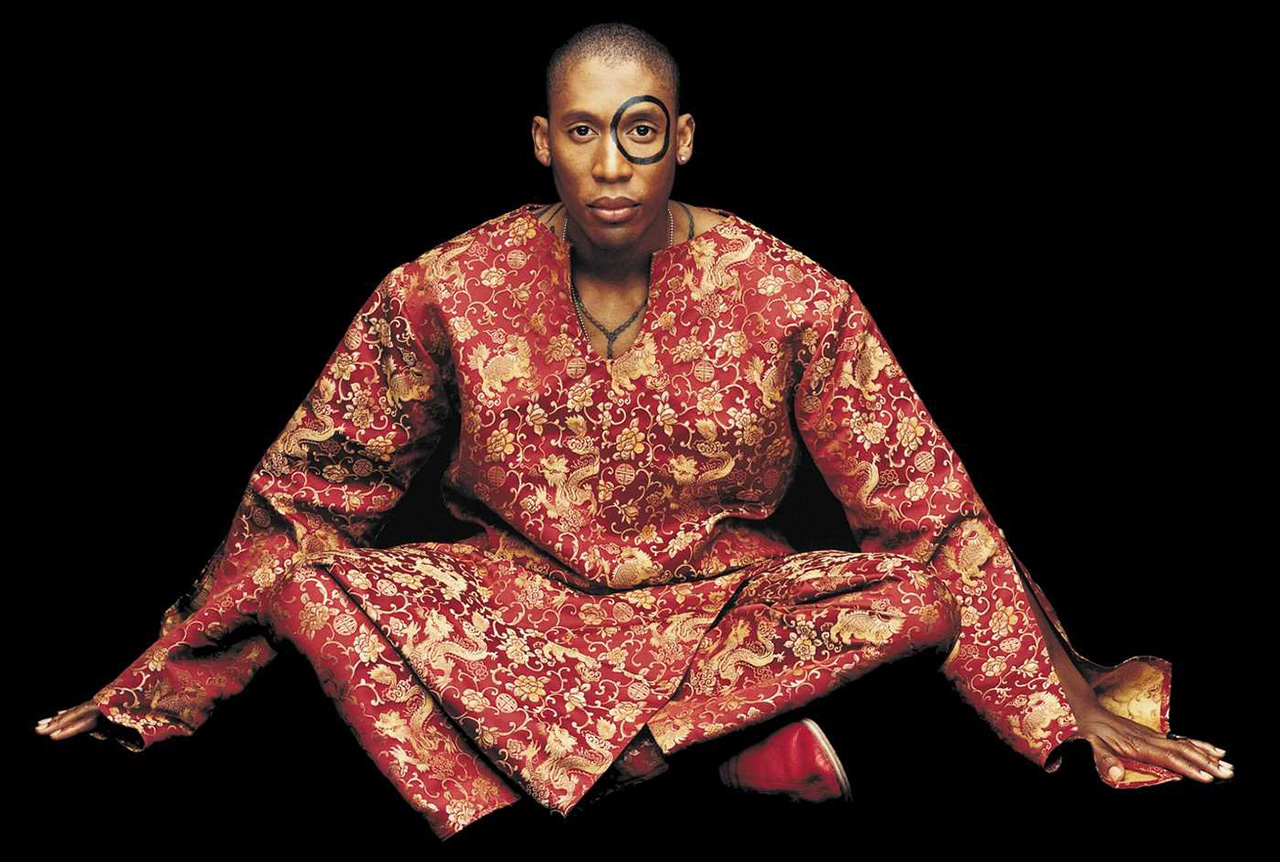
The clothes seen on the cover were custom-made by “two beautiful ladies in New York and Atlanta” as very much a last-minute consideration, Saadiq explains. By his own admission the original plan was something far less dignified and elegant, and a lot more provocative and out there.
“When I did the original photo session, I had a completely different look,” he laughs. “I had a Mohawk, my shirt off and these leather pants and boots, sitting in this chair like Al Green.
I decided to become a lead singer and play guitar… I had to become comfortable with that. The Tele is what made me feel like I could do it
“A friend of mine, Ray Murray from [acclaimed Georgian production team] Organised Noize, said he was unsure about the pictures – that I looked too crazy! Then he started telling me that he felt my album sounded like ‘instant vintage.’
“All of that happened in the space of three minutes. I cut my hair the next day and decided to rename the album. Then we took that one picture with the circle around my eye, after the original sessions had been scrapped. It became an iconic cover for an iconic record.”
You roped in Eric Gales for the video to promote the new guitar. What do you love about his playing?
“My favorite thing about Eric goes way beyond his guitar playing and songs. It’s just the vibration of who he is as a person, and how he became a guitar. He took all his emotion and expression and threw it into the guitar.
“He shocks himself when he plays – you’ll see him doing a certain thing and then stopping to say, ‘Oh my God!’ He’s so good he manages to surprise himself. On top of that, he’s a really good dude and a good person.
“He makes records and sings. He can play a solo or a chord and drop his E-string down to a D just for a moment. He’ll happily change tunings in the middle of a song. I’ve never seen anyone do it like that before. I really liked his last album Crown, especially songs like Survivor, Stand Up and The Storm.”
You had some input on the two single-coil pickups. What exactly were you looking for?
“I’m not great with that stuff beyond knowing about the difference between humbuckers and single coils. My experience of guitars is mainly picking them up and playing them. But the one player I grew up listening to was Tony Maiden from [American funk group] Rufus. He was the first person I paid attention to who was playing a Tele.
“After that it was all about Prince, because he really loved Teles. You can hear that twang on songs like When You Were Mine. His tones would just bite you – it almost felt like a bass to me. Then I started watching Hee Haw as a kid, seeing all these country guys playing.”
So how would you describe your approach to guitar playing?
“I love playing rhythm guitar – I’m probably more of a rhythm guy. I play more solos nowadays using different kinds of effects, but I come from more of a rhythm background. There’s something about a Tele when you plug into a Fender Twin. It just bites you in the middle and front, and then there’s that twang at the back.
“A Tele is all I need to walk out onto a stage. It took quite a bit of confidence having been a bass player to walk out there with a guitar. But I decided to become a lead singer and play guitar, like a frontman. I had to become comfortable with that. The Tele is what made me feel like I could do it.
“I remember Carlos Santana giving me a lot of confidence around the time I was switching. I was hanging out at his house for a week or two. He was like, ‘No pressure to come up with music; let’s just hang out and play!’
We wanted to contribute something to hip-hop, taking influence from Steve Cropper and all those cats who played soul songs like Knock On Wood
“I’d play bass and he’d play guitar, telling me about Woodstock and what it was like for him. I guess they were doing some kind of fun drug and he didn’t think he was going on until much later – but then all of a sudden they said, ‘You’re on in 10 minutes!’ and he was like, ‘Woah!’
“He was telling me all these stories while soloing. And then after a while he said, ‘Okay, let me play bass and you play guitar.’ Initially I said I couldn’t – but he explained that whatever I played belonged to me. I could own it. I feel like I took that with me when I became a guitar player.”
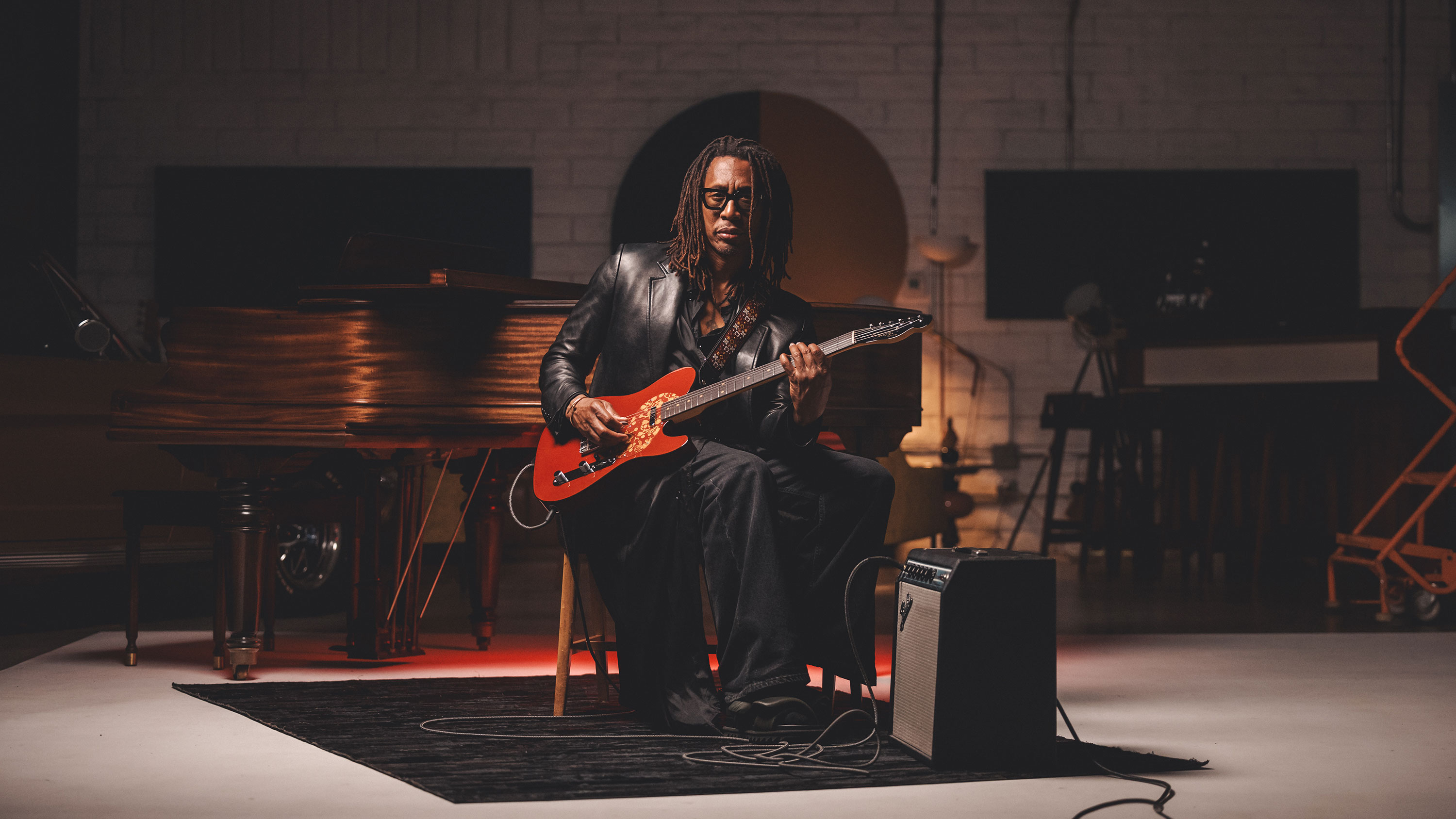
You worked with D’Angelo on tracks like Lady and Untitled (How Does It Feel), both of which ended up becoming big singles for him. There’s a really noticeable behind-the-beat feel to a lot of his early tracks.
“Yeah, it was just me and D’Angelo, really. We’d split the parts so I played drums and bass on Lady, with him on keyboards. We just fell into this groove with it, but without paying too much attention to how much we were behind.
“I guess we were sort of playing a game to see who could get the furthest behind without getting off beat. That was the game – but we never spoke about it or planned it. We were just feeling it out, laying back on the groove and the chords while staying locked in with the drums. It’s something we took from [producer/rapper] J Dilla, may he rest in peace.
“Me and D'Angelo had only just met when we were making Lady. We wanted to contribute something to hip-hop, taking influence from that as well as Steve Cropper and all those cats who played soul songs like Knock On Wood.”
Out of all the names you’ve worked with, Beyoncé could very well be the biggest. What does she look for when it comes to collaborating in the studio?
“Mainly I think she’s looking for partners who are into music the same way she’s into it. There are a lot of great musicians and top-line writers in the organisation around her, working with her every day. It’s a great team.
Working with him Stevie Wonder includes a lesson or two along the way. That’s what I love
“It’s like having a great general manager who puts all the right people on the football field or basketball court – the ones who will deliver. So Beyoncé works at the highest level and looks for people who can do the same. And that’s exactly what great musicians should be doing.”
You also worked with her and Stevie Wonder for a cover version of Luther Vandross’ So Amazing. That must be pretty high up in terms of life achievements.
“Yeah! Stevie is a legend. He’s the guy who drops you great information about practicing. He told me I needed to do five hours a day to get good at piano. You have to put the time in.
Working with him always includes a lesson or two along the way. That’s what I love about working with him. He’s just one huge vibe – a great historian and musical mastermind. He carries so much information and he’s generous enough to share it all with somebody like me.
“It gave me great confidence to work closely with him in the studio, talking about some of the legends he’s hung with like Eddie Kendricks, David Ruffin, Four Tops, Smokey Robinson, James Jamerson…
“I got a real good scope of Motown through Stevie. When you put the stories with the music, it really gives you the confidence to reach out and do what you want to do.”
It’s not just straight soul and R ’n’ B on your CV, either. You’ve worked with musicians as varied as Courtney Love, Paloma Faith and Bee Gees.
“It all made sense because even with artists like that, I found we all listened to the same music... and a lot of it was Black. I find we’re all cut from the same family tree. Especially with Bee Gees, they’re basically a Black group from Australia!
“Working with Barry Gibb for the short time I did, he had so many inspirational things to say. He was always telling me there’s a way to conduct yourself in a session.
It’s not about making records for one demographic. It’s about making a record that you really love… you have to love it before the fans love it
“You might want to say, ‘That take wasn’t good,’ but he learned over the years – working with Barbra Streisand and people like that – to say, ‘That was good, but we can get a better one!’ He was full of tips like that – things that helped everybody keep working throughout the day.
“You pick up so many different things from the greats. And they always say if you want to one of the greats, you have to study the greats, not the amateurs. I’ve been fortunate enough to work with many of them and he’s definitely one of the great ones.”
Then there’s your production and songwriting credits on releases by artists like Kanye West and John Legend.
“I’m working with John on a new album right now. He comes from that school of songwriting and adding samples, guitars; there’s always stuff to add when you’re making songs that will be national or worldwide.
“It’s not about making records for one demographic. It’s about making a record that you really love. The best records come out that way – you have to love it before the fans love it.
“Those are the records that become the biggest ones; it’s a huge listening experience stretching from America to Africa and Europe. So me and John are just in the process of getting together and talking about the next record.
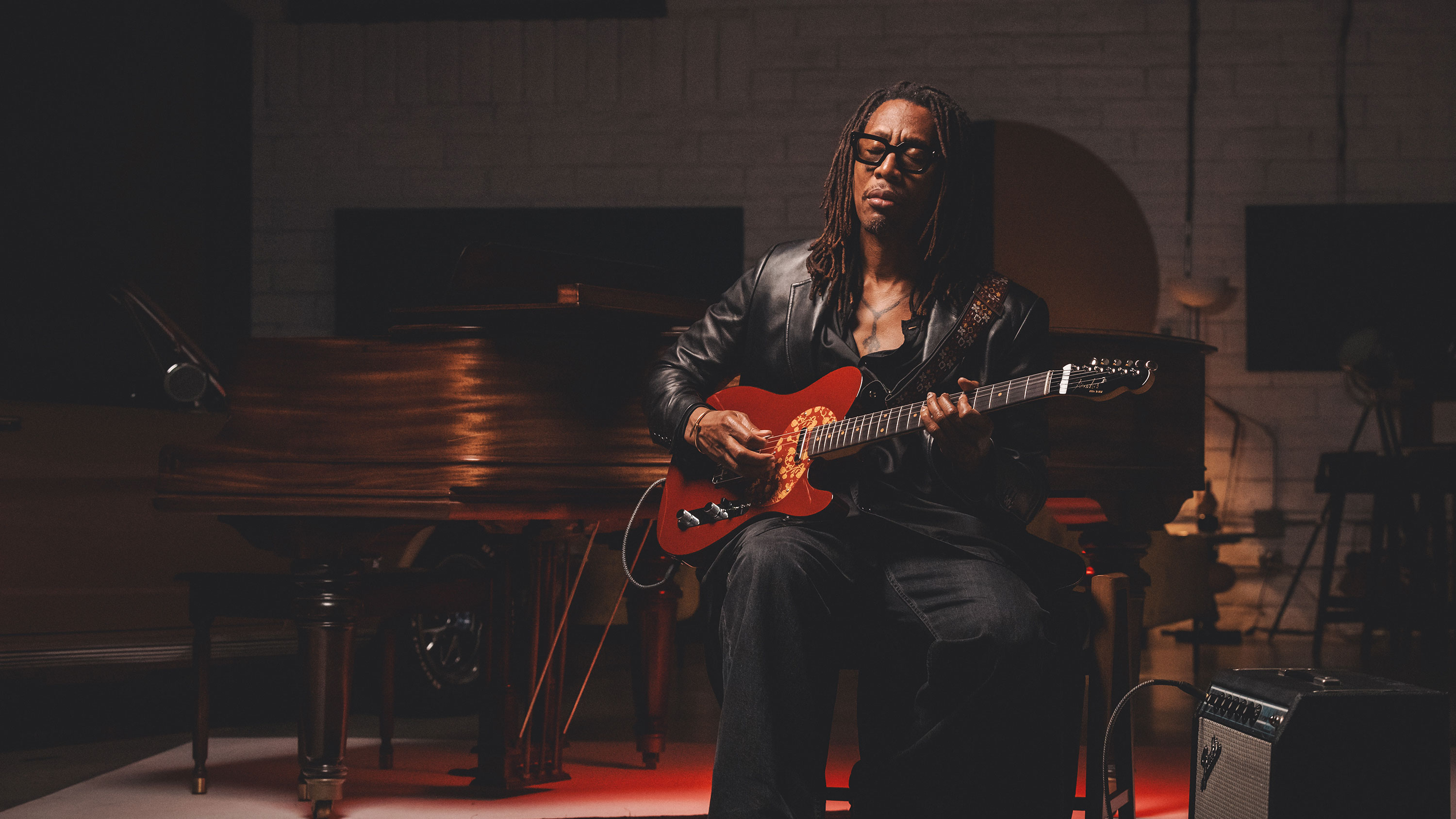
“It’s a bit like Quincy Jones – he had this big Rolodex and could put together a beautiful team to make music. That’s what I want to do now: find the right people and make live records the way Quincy did with Rod Temperton, Bobby Watson, Greg Phillinganes... a good community of people.”
Studio sessions were a lot more loose and free in those days. There was a lot more time devoted to trial and error, embracing experimentation.
I don’t really believe in old school or new school – you either went to school or you didn’t
“Yeah, that’s just what it was like back in the day. I wasn’t around, but another Telecaster hero of mine, Ray Parker Jr., was always telling me about sessions where they’d hit five studios and bring all sorts of people in.
“You’d bring different talents into the music. I don’t really believe in old school or new school – you either went to school or you didn’t. That quote comes from Isaac Hayes; he told me that.
“I’m a person who went to school and tried to invite people to it. That’s how to keep things fresh and keep pushing forward. It might sound like an old idea, but old ideas can become new ideas.
“I try to bring that into the world. That’s what we did with my Tele. It looks like it’s from another world, but it’s also from this world.”
So what kind of rig are you plugging your signature Tele into right now?
“I usually have my Fender Twin with a Rat and a Jimi Hendrix Fuzz Face. I really love my Cry Baby wah and that’s about it, with a little bit of reverb from the amp.”
How many Teles do you own in total?
“I have around six in total. That’s how I got the sound for my Tele. I worked with the Fender guys to get them to dial it in like this or that. There’s one Tele, I think it’s from 1973, which I got from Chicago Music Exchange. I walked into the room, played it and it sounded so good clean. I know that if a guitar sounds good clean, then it’s going to sound great with more bite.
“I didn’t just want to be buying guitars for no reason, though, so I told them, ‘If I feel I can’t live without this guitar, I will call you and have you send it to the next city!’ And as soon as I got to the next city, I phoned them and bought it.
Eric Clapton saw the video of me and Eric Gales playing together and said he was a big fan of both of us
“It’s the one I really love. I asked Fender to make my signature speak in the same way: to bite, open up and blast how I like on the front pickup and get really twangy and funky on the back.
“I also wanted it to look cool; that’s why I didn’t put my name on the headstock. It’s an image from my Jimmy Lee on the backplate. I feel like people can play that guitar and it will have all the looks and sound you need. It’s a four-way device that can do it all.”
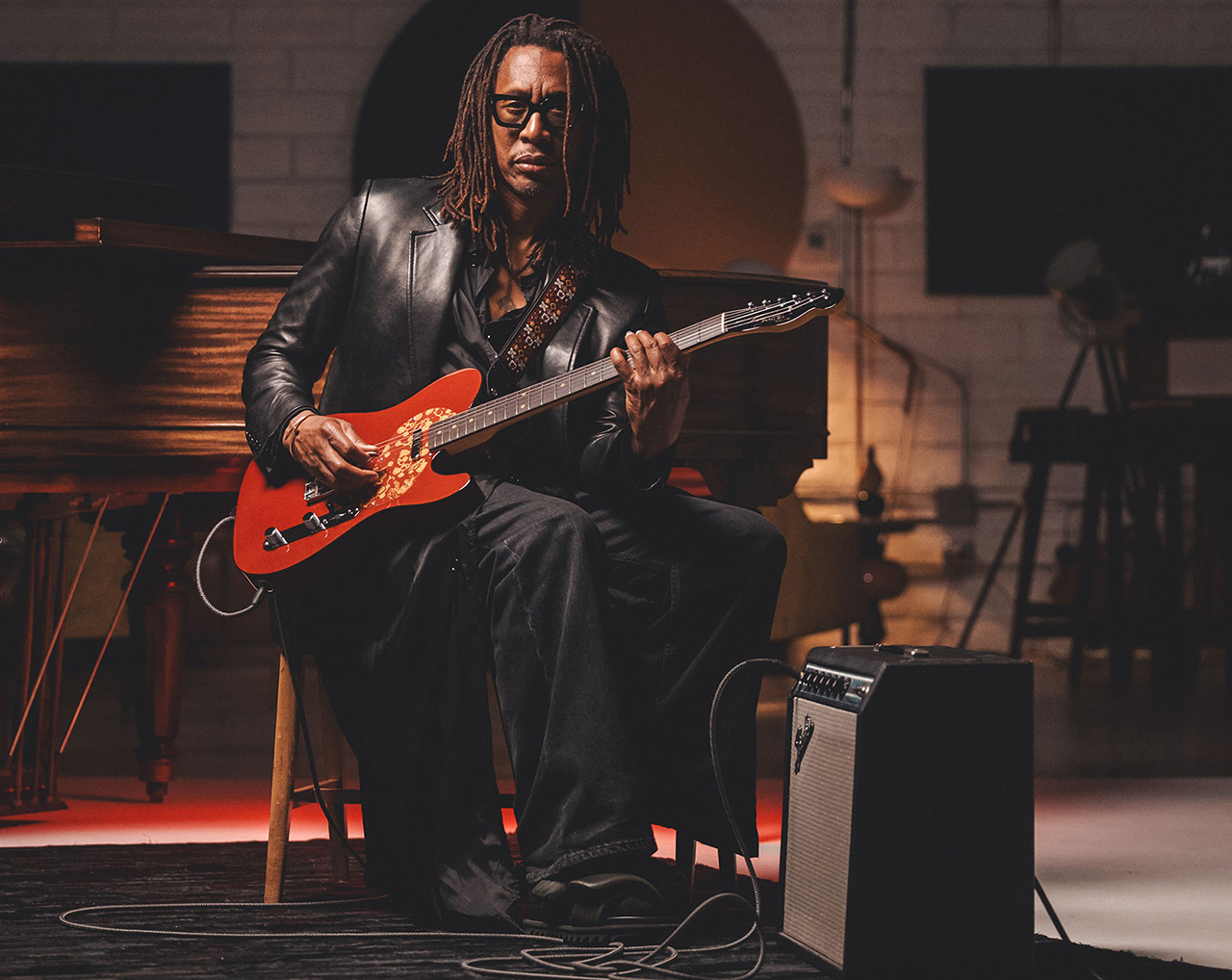
So would that 1973 Tele be the oldest guitar you own?
“It would be the oldest Tele, but my oldest guitar is a 1962 Strat. I probably have eight Strats in total. And as for all my basses and guitars, there are probably around 300.
“Someone I know was messaging someone about my new guitar, and said it’s a really nice-looking guitar. I asked, ‘Who are you messaging?’ and he said, ‘It’s Eric Clapton!’
“I think he saw the video of me and Eric Gales playing together and said he was a big fan of both of us. I mean, wow – that’s one of the greats. It was nice of him to say that and show some love. So my plan is to send one of these guitars out to Clapton and another to Buddy Guy. I’m sure neither of them need any more guitars – but why not!”
- For more information on the Limited Edition Raphael Saadiq Telecaster, head to Fender.com.
Amit has been writing for titles like Total Guitar, MusicRadar and Guitar World for over a decade and counts Richie Kotzen, Guthrie Govan and Jeff Beck among his primary influences as a guitar player. He's worked for magazines like Kerrang!, Metal Hammer, Classic Rock, Prog, Record Collector, Planet Rock, Rhythm and Bass Player, as well as newspapers like Metro and The Independent, interviewing everyone from Ozzy Osbourne and Lemmy to Slash and Jimmy Page, and once even traded solos with a member of Slayer on a track released internationally. As a session guitarist, he's played alongside members of Judas Priest and Uriah Heep in London ensemble Metalworks, as well as handled lead guitars for legends like Glen Matlock (Sex Pistols, The Faces) and Stu Hamm (Steve Vai, Joe Satriani, G3).

